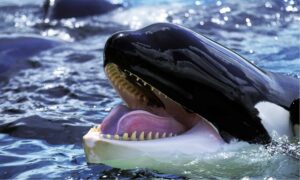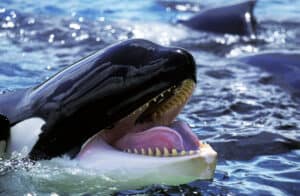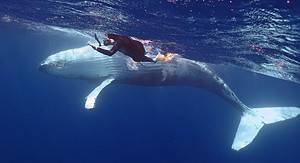Baby beluga whales are some of the most unique whales in the entire ocean. They have special traits that set them apart from other species. They also sing a beautiful song which inspired their nickname: canary of the ocean.
Read on to learn five baby facts about belugas and to see 5 adorable baby pictures!
#1: Baby Beluga Whales Can Swim Backwards
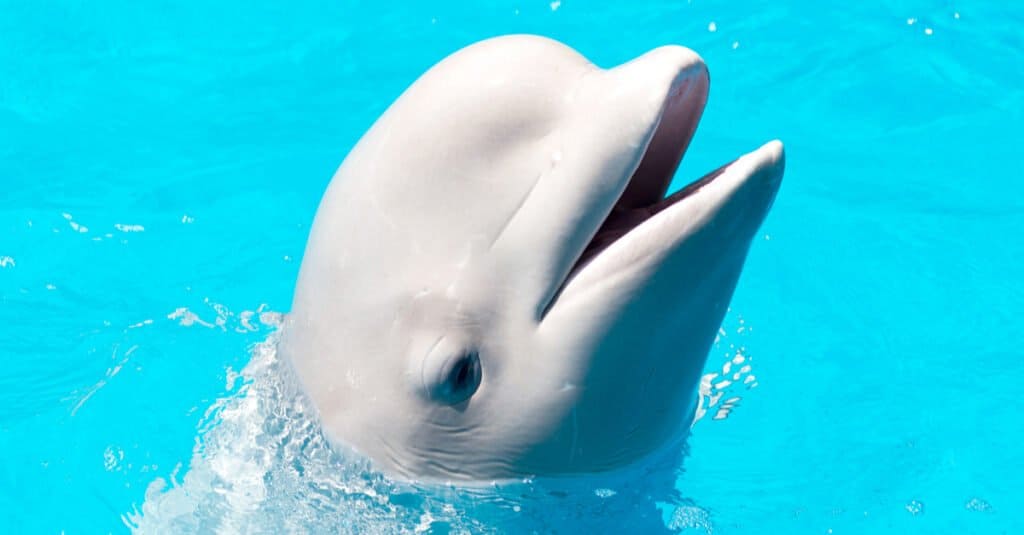
Baby belugas are the only whales with the ability to swim backwards.
©Elena Larina/Shutterstock.com
Baby beluga whales are some of the most astounding whales in the ocean. They are not only shaped much differently, with bulbous, oil-filled heads, but they are also the only whale that can swim backward! Belugas can also blow bubbles, which is something that other species of whales are unable to do.
Those aren’t the only traits that make beluga calves unique. As they grow, they shed their outer layer of skin to make room for more size in a process called molting. And that’s not all!
Baby belugas are also the only whale that doesn’t have a dorsal fin. Since they live in the Arctic, they must be able to withstand extremely low temperatures. These fins would allow too much heat to escape from their bodies, which could be deadly. This, combined with a thick layer of blubber under their skin, allows the whales to survive in the cold.
#2: Beluga Whale Babies are Born with Dark Skin
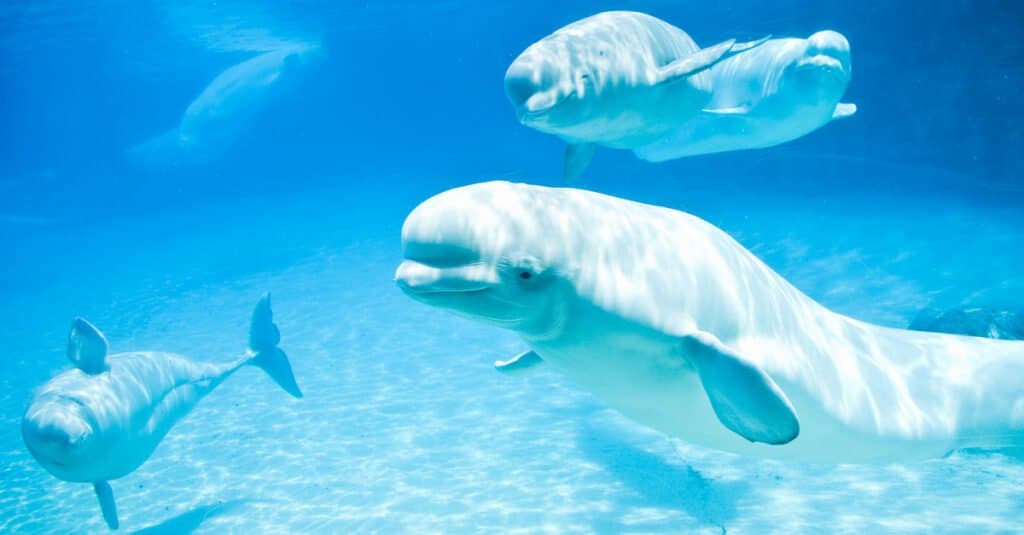
Beluga calves are born with darker skin than adults.
©Miles Away Photography/Shutterstock.com
One of the most recognizable features of beluga whales is their stark white skin. You might be surprised to learn, though, that when they are born, they don’t have the pale complexion you’re used to seeing. Instead, they are born with darker skin that ranges from dark grey to greyish hues.
Scientists believe that the darker hue that baby belugas sport may be an evolutionary trait to protect them from predators. White skin might make the young whales evident to predators. Dark skin, on the other hand, offers more camouflage and makes them more challenging to spot when underwater.
#3: Beluga Babies Can’t Breathe Underwater!
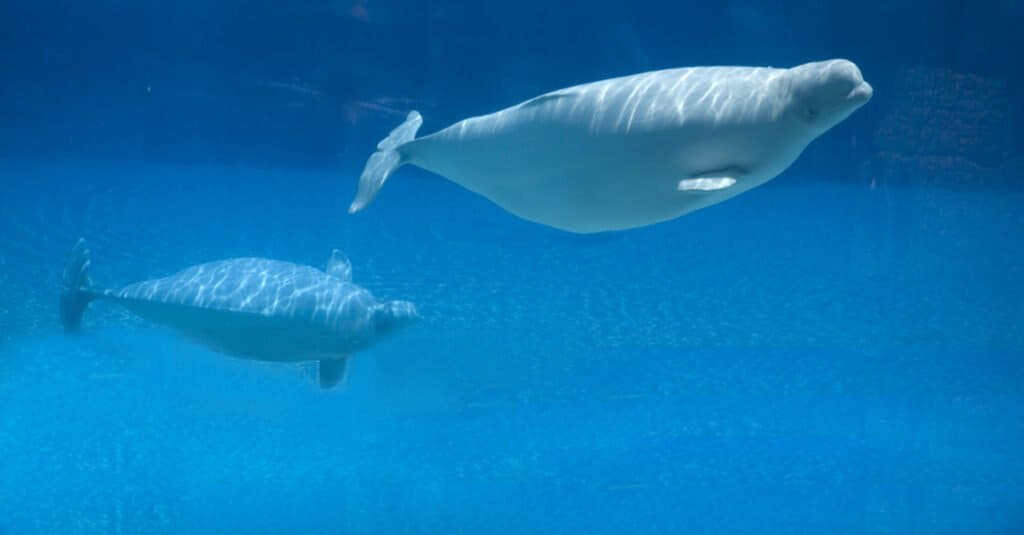
Beluga babies can’t breathe underwater, but instead, take breaths from the surface.
©glen gaffney/Shutterstock.com
You might be wondering how it’s possible for a sea animal like a beluga calf to lack the ability to breathe underwater. It’s true. Since beluga whales don’t have gills, they’re not able to convert water into oxygen. Instead, they breathe by coming to the surface and taking breaths.
While they’re beneath the surface, baby beluga whales can hold their breath for up to 15 minutes. This is how they’re able to swim around under the water without needing to constantly come up for air as a human would.
But what about when the surface of the water is frozen? If beluga calves are unable to surface for air, they have another astounding way to survive. Beneath icy water, there are pockets of air. Beluga whales can detect these pockets and extract enough air from them to survive. Awesome!
#4: Beluga Calves use Echolocation to Navigate their Surroundings
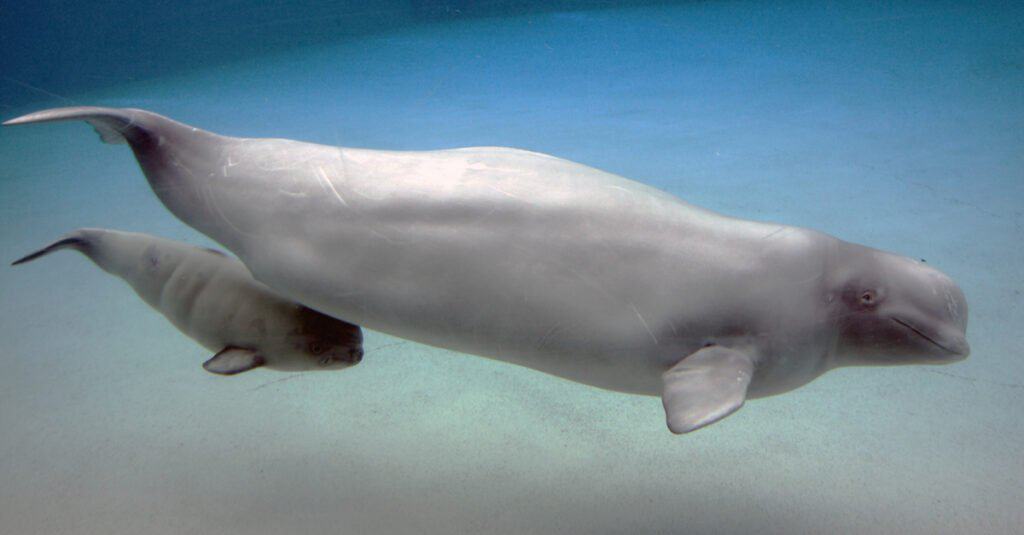
Beluga calves use echolocation to communicate and to see around them.
©Christopher Meder/Shutterstock.com
Baby beluga whales have excellent eyesight both underwater and above the surface. That’s why it’s so amazing that these creatures also have echolocation. When belugas use echolocation, they make a sound that ricochets against their surroundings. When the sounds come back to the beluga’s melon, they can see a map of their surroundings.
Beluga calves don’t use echolocation solely to see around them, though. This fantastic, unique ability also makes it easier for them to hunt. It can also be used to communicate with other whales around them. They can also change the shape of their melon to direct and receive sound. Pretty cool, huh?
#5: Baby Beluga Whales are Called Sea Canaries
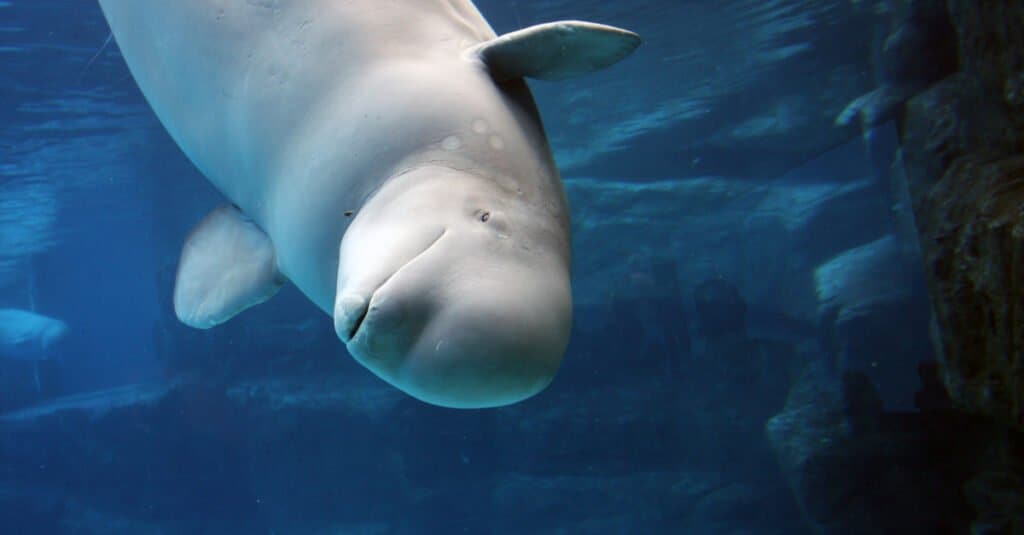
Young beluga whales are called sea canaries for their beautiful singing voices.
©Christopher Meder/Shutterstock.com
Did you know that belugas and their calves are often called canaries of the sea? This is because they are some of the most talkative creatures in the ocean. This is partly due to their ability to use echolocation to see around them and communicate with each other.
The sounds that beluga whales make are also beautiful. They sound like undersea songs and are so impactful that many people are passionate about conservation. These people argue that the sea needs to be filled with the beauty of a beluga’s song.
What does a baby belugas voice sound like? Many people describe the beluga’s singing voice as a mix of clicks, chirps, moos, squeals, and whistles. That’s quite the eclectic mix!
The photo featured at the top of this post is © Christopher Meder/Shutterstock.com
FAQs (Frequently Asked Questions)
What are baby belugas called?
Baby belugas are called calves.
How much do baby belugas weigh?
As babies, belugas can weigh up to 1,200 pounds.
What do baby belugas eat?
Newborn beluga whales survive exclusively on their mother’s milk. Then, they transition to shrimp and small fish.
Thank you for reading! Have some feedback for us? Contact the AZ Animals editorial team.



